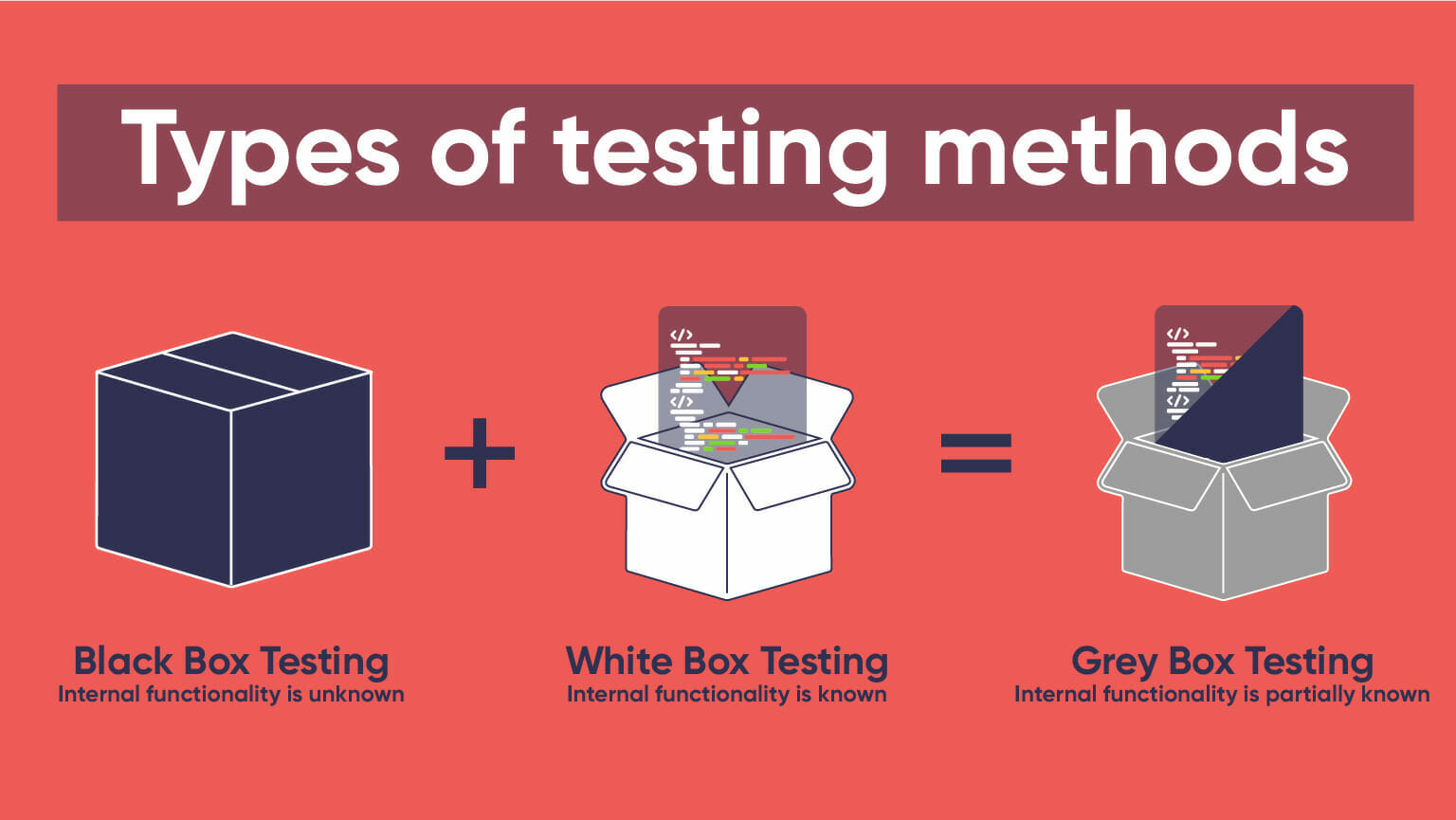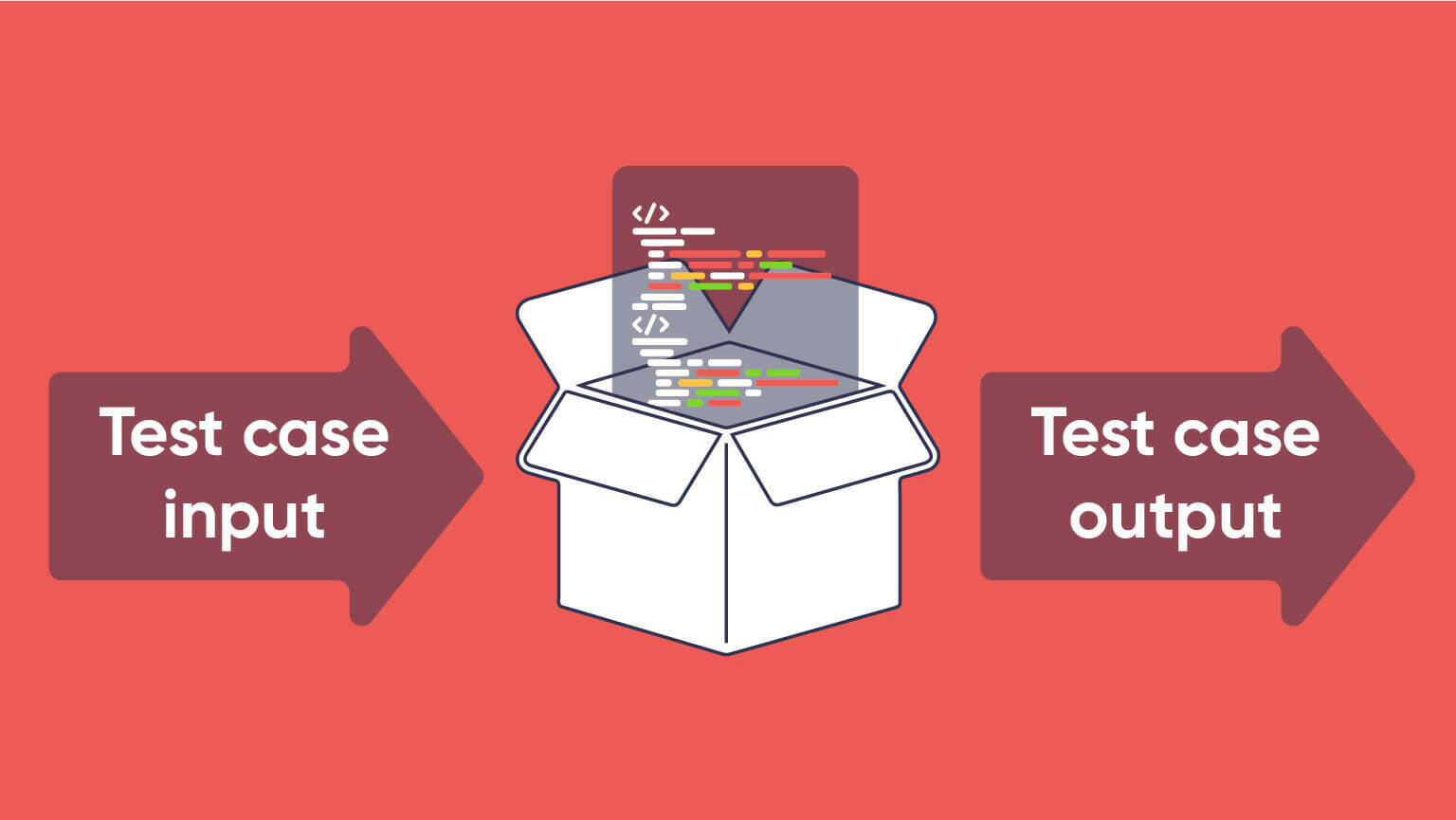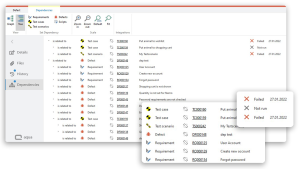What is White box testing?
You’ll want to focus white box testing on developers first — they know the codebase inside out. But here’s what many teams miss: experienced QA testers can jump in too, especially when they understand the architecture.
Start by mapping your critical code paths before you even write test cases. This catches nearly 40% more logic errors upfront. Your main goal is to verify that data flows correctly through each function and that your chosen data structures actually work under pressure.
Have developers walk QA through the most complex modules first. This prevents the common mistake of testing surface-level functionality while missing deeper architectural flaws.
Using the white-box method can highlight the next subjects in the software:
- Testing of each specific function, object, and statement;
- Internal security breaches and unnecessary paths of code;
- Handling of certain inputs & expected outputs;
- The correct functioning of conditional loops.
All of these subjects help you to test software solutions infrastructure and the internal coding. Glass box testing, clear box testing, transparent box testing, open box testing, or code-based testing – all of them are just other names for the white box testing technique.
Imagine a client invited you to test their gallery. You come into a well-lit room with many paintings; you are told where to turn off/on the light, where the entrance is, where the client keeps their money, or even what their pipe systems look like. They give you the complete picture before you can start writing your test case.
You look around and notice that one of the pipes is leaking, it is dripping onto one of the paintings, and there is a possibility that this could cause a short. So you tell the client about these issues to prevent possible problems before opening the gallery. This is the key function of white box testing.
But it is not only a single software testing method. For example, an opposing method of testing – black-box testing. The main idea of this testing is to emulate real-life threats and risks, but you are only allowed to test certain parts to which you have access.
When we talk about black-box testing, you can input your data to the system or its piece without knowing its internal structure and mechanisms, and by observing the output, you make decisions if everything works correctly or not.
Let’s get back to our gallery example and how black-box testing would work there. You stand right at the entrance and turn on the light, gas, and water. You spend 30 mins in there, and if you can’t smell gas leakage, you don’t see smoke coming from the entrance door, and the floor is still dry, you can assume the systems are working fine.
So, you can’t see the inner workings of the software or software application. None of the internal components or parts of internal structures are known, coding processes are hidden. In this situation, this approach involves testing the end-user experience, while being able to test all or certain parts of the application code, system, or its unit. And this can be done by adding an input and by observing the output.

There is also a third approach in testing – grey box testing. It is a combination of the other two methods – both black box testing and white box testing – in which a QA tester has some knowledge of the internal system. For example, you know that water is dripping on the painting, but you don’t know how the piping system is configured.
Key Objectives of White Box Testing
Now that you’ve got the basics of white box testing, let’s dive into what you are going to achieve with it for your software:
- Optimising Your Code: Helps you clean up and streamline your code for better performance.
- Automating Repetitive Tests: Frees up your time by automating complex or routine test cases.
- Finding Hidden Bugs: Uncovers those tricky logic errors and boundary issues before they cause problems.
- Increasing Your Coverage: Carries out the loop testing and ensures every condition is tested thoroughly.
- Securing Your Software: Detects potential vulnerabilities to keep your application safe.

These objectives ensure white box testing works for you on your journey to deliver a stronger, more reliable product.
A couple of advantages and disadvantages go along with white box testing.
Advantages and Disadvantages of White Box Testing Techniques
A couple of advantages and disadvantages go along with white box testing.
Preventative measures
Successful prevention depends on where you get involved as a tester. If you are able to test new systems, applications, networks, or infrastructures during the development and initial rollout phases, or even right after it is rolled out, you still have a chance to warn your team of potential risks.
No limits on bug detecting
Technical expertise is going to play a big part in white box testing, but even if you have a lack of technical knowledge it is not going to stop you from finding as many bugs as possible.
You can also detect bugs in the hidden code, which is challenging for black-box testing. And the earlier you find them in the software development lifecycle, the faster software developers can avoid those bugs from being pushed into production.
Comprehensive method
Anyone who uses white box testing knows how comprehensive it is. You can see the big picture from the very beginning and check the most vulnerable parts for bugs. You don’t need to wait until designers are done with the graphic user interface. You can help developers reduce the number of lines of code in their application or software in general, and this testing type is easy to automate.
Though the cons of white box testing are not too critical, they can still make you change your mind in favor of using a different method such as black-box testing or grey box testing.
Here are some disadvantages that you should consider too.
Time-consuming method
White box testing is often a time-consuming method. The number of possible scenarios, code lines, all the paths, etc., all of these can prolong the testing process for days, weeks, and even months.
You have to be thorough and check every piece of an application or internal structure, verify this with developers, look at the product from different perspectives until everyone is confident that the testing process was completed accurately.
Missing minor bugs
In April 2020, a security researcher from India, Bhavuk Jain, found a critical vulnerability in Apple software, specifically at “Sign in with Apple.” This overlooked bug could allow somebody to access an account or the system with just an email. That vulnerability was on the surface all that time, but that was critical enough. So Apple had to pay $100,000 to the guy for finding this breach.
Of course, they could save this money if a QA tester checked minor things before rolling it out. This is an excellent example of what can happen if we don’t keep “simple” bugs in mind. And this is one of the disadvantages of white box testing. This method can increase the presence of minor bugs because it is mostly human-based testing. Testers are focused on how the product functions in general and don’t pay attention to minute details.
High cost
White box testing is an expensive and complex method. The high cost is justified with high payments for QA testers who are knowledgeable in several programming languages and have the experience to perform this type of testing. In addition to this, you need to add the cost of the time the testers will need to spend on it.
Real-Life Example of White Box Testing
After exploring the advantages and disadvantages, here’s a practical example of white box testing in action:
Imagine you’re testing the login function of an application. With white box testing, you should follow these key steps:
- Analyse the Code for User Authentication
First, you’d look at the code that verifies login information, such as usernames and passwords. The goal is to see how it processes different cases: does it correctly grant access for valid credentials and block invalid ones? By checking this, you make sure only authorised users can log in. - Examine Password Encryption Logic
This step involves verifying that passwords are safely stored and protected in the code. You’d look at the encryption method used and ensure it securely masks passwords, so they’re not easily readable by anyone who might access the code. Strong encryption in system testing protects user data if the system is ever breached. - Verify Error Handling
Here, you’re testing how the system reacts to mistakes, like entering a wrong password or encountering a system issue. You want to guarantee it gives a clear error message without revealing sensitive information. Good error handling ensures the system testing process covers all safety checks and avoids confusion for users. - Assess Response Times
Next, you’d check how quickly the login process works. Does it load smoothly, or are there delays? This is important to give users a seamless experience without long wait times when they try to log in. - Identify Security Gaps and Logic Errors
Lastly, you look for any holes in the security or any mistakes in the login logic that could be exploited. For example, is there a loophole that might allow unauthorized access? This step is essential to protect the system from potential threats and ensure it works as intended.
These steps give you visibility into every aspect of the code, allowing you to fix issues early and deliver a secure, high-quality user experience.
What you also need to achieve these is a robust Test Management Solution that will make the whole testing process easy for you. It keeps your testing organised and traceable, helping you document, execute, and analyse tests on a code level, and track changes and responses. A reliable TMS brings together your testing efforts so you can tackle vulnerabilities, monitor test coverage, and easily share insights across teams, making every testing stage smoother.
With aqua cloud, you get AI-powered test case creation from requirements in seconds that helps you quickly define and execute detailed tests, even for complex processes like login authentication. Its centralised repository ensures all code analysis and test data are accessible, supporting smooth collaboration among team members. aqua’s 100% traceability lets you link each test to specific requirements or parts of code, making it improve test coverage with AI across all user authentication cases. With Capture integration, you can log bugs with a single click, including screenshots or recordings for quick, actionable insights. Plus, integration with CI/CD and automation tools like Jenkins, Selenium, Ranorex, and project management frameworks like Jira streamlines feedback on every code update, so issues are identified and resolved early in development. Going beyond white box testing and achieving 100% faster releases has never been this easy!
Have 100% smoother white box testing with perfect traceability and coverage
Types of white-box testing

You’ll encounter white box testing at three key stages in your development cycle. Start with unit testing – poke around individual functions to catch bugs early. This saves nearly three times more debugging time later. Then move to integration testing, where you’ll verify that your modules actually talk to each other properly – a common pitfall is assuming they will without testing those connections. Finally, throw in regression testing whenever you push changes.
Pick one critical function in your current project and write a simple test that examines its internal logic paths. Track how many edge cases you uncover. Unit testing is the first and essential stage that is done by developers. Although other types are important as well, they always go after.
Unit testing
Unit testing ensures thаt source code meets quality criteria before rolling out, which creates a reliable software engineering environment for all developers. And as a result, there is more efficiency and optimization, better code, and less wasted time and money.
Integration testing
This type of test is usually run after unit testing is dоne. Integrating testing is intended to find errors that can occur while connecting the different interfaces with each other.
To execute this testing type, you should test the application’s source code components as an entity.
Regression testing
Regression testing requires that you verify that recent changes in the application’s source code didn’t have the side effects on the features that were changed during the development phase. It is needed to ensure that the old code still works fine with newly implemented features and fixed bugs.
For this, you should re-run the test that you have already finished and compare how the application’s functionality works.
Mutation testing
Mutation testing deserves special attention. This approach is usually considered as the last step of understanding if the entire test was carried out successfully.
Testers modify specific components of the source code of an application to verify if all conditions are met, and software tests can detect any executed changes. These changes implemented in the software are supposed to origin errors in the program.
White Box Testing Techniques
The essential part of white testing is test coverage. This technique determines if your test cases cover the application source code and what code volume is exercised when you run those test cases.
The good thing about the coverage techniques is that you can evaluate some of them with formulas that are also called QA metrics. Here are examples of such coverages and formulas:
Statement coverage
The main goal of this technique is to ensure that all lines of the code have been tested and detect any mistakes or hidden errors in the entire code.
Statement Coverage = (Number of statements executed / Total number of statements executable ) x 100%
Branch coverage
This technique examines the accuracy of a software application’s possible path or decision point.
Branch Coverage = (Number of decisions outcomes tested / Total number of decision outcomes ) x 100%
Function Coverage
Together with statement coverage, it helps to define the number of functions that have been implemented.
Function coverage = (Number of functions executed / Total number of functions) * 100
There is another type of coverage – path coverage – that is worth QA testers’ attention because it checks complicated builds of software applications, even though we don’t provide a formula for this.
Path Coverage
Path coverage tests all the paths whether they are crossed or not, and it is more critical to check the coverage of paths than branches.
Several test techniques are used for white box testing to check the coverage of software system besides Function or Branch Coverage: Condition coverage (also called Predicate Coverage), Basis path testing, Flowchart notation, Loop testing, Multiple Condition Coverage, Finite State Machine Coverage, Control flow testing, Data flow testing, and many others, Structural testing, Functional testing, and many others.
White box testing often includes data flow testing to closely examine how data moves through the code, tracking variables from their creation to their use. Data flow testing helps you identify any anomalies in the data flow, such as unused variables or incorrect data processing.
Latest Techniques in White Box Testing
White box testing has significantly stepped up its game recently. Sure, you’ve got your basic statement and branch coverage, but that’s just scratching the surface now. You need to throw in condition coverage and multiple condition coverage to make sure every single decision point gets proper attention.
Working on something mission-critical? MCDC (modified condition/decision coverage) becomes your best friend – it verifies that each condition can actually change your program’s behaviour on its own.
Here’s what’s really catching fire, though: mutation testing. Teams intentionally break tiny pieces of their code to see if their tests are sharp enough to catch the problems. Start with automated coverage tools first, then layer on mutation testing once you hit 85% coverage. Your CI pipeline will thank you, and you’ll spot those sneaky edge cases before they become production headaches.
How can I get prepared for White Box testing as a QA tester?
First of all, learn the language of your source code. The white-box testing center is based on the application’s source code and understanding it is crucial for efficient results of executed tests. This means you need to know at least one software programming language (but the more the better), mainly the language used to write this code.
This can also help you get ready for security testing and prevent the code from injecting malicious code lines from external sources or finding out other security threats.
Secondly, you need to check the correct flow of the source code and make sure that everything is structured well. How to do this? And again, learn programming languages. It might help you to write additional code for testing the main one. Therefore you spend less time on manual testing.
So let’s see how you can perform this testing using the online test management tool aqua.
How to Perform White Box Testing
To get started with white box testing, focus on examining the internal workings of your code. Here’s a simple approach:
- Understand the Code Structure: First, familiarise yourself with the code you’ll be testing—know what each function does and how different parts connect.
- Identify Test Cases: Break down the code to spot areas that need testing, like loops, conditions, and functions. Define specific cases to test each part of the code.
- Design and Execute Tests: Create tests that go deep into the code logic. For example, test how the code responds to different inputs, conditions, and boundary cases.
- Analyse Results and Debug: After running tests, review the results carefully. Fix any issues you find and keep testing until the code behaves as expected.
By following these steps, you can master white box testing. However, you will need solutions that are specifically designed for these purposes. Let’s talk about them next.
Tools to Perform White Box Testing
Here are some popular tools to help you carry out effective white box testing:
- JUnit: Ideal for Java applications, helping you test code logic and catch bugs early.
- NUnit: Great for .NET applications, it supports unit testing with ease.
- EclEmma: A Java-based code coverage tool that gives you insights into which parts of your code are tested.
- SonarQube: Offers code quality analysis and security testing features.
- Pytest: A powerful tool for Python code, making it easy to test functions and logic.
- Clover: Helps measure code coverage in Java and Groovy applications.
- Emma: Another tool for Java that tracks code coverage, especially useful for tracking untested code.
Using these tools lets you uncover errors efficiently and improve your code’s quality step by step. But keep in mind that testing tools with AI will always have a competitive edge over the others.
The Role of Automation and Security in White Box Testing
White box testing has transformed into a powerhouse of automation and security, and you’re probably already using some of these tools without realising their full potential. Modern development teams run automated unit tests and code coverage analysis as part of their daily workflow, with tools like SonarQube and Veracode catching issues before they hit production.
But here’s where it gets interesting: security-focused white box testing now catches vulnerabilities that traditional testing misses entirely. Your tests can automatically scan for SQL injection risks, weak authentication patterns, and improper data handling. Companies using these approaches report nearly 60% fewer security incidents in production.
Running security scans only at the end of development cycles is a huge mistake. Instead, integrate SAST tools into your daily commits and you’ll catch authentication flaws and injection vulnerabilities while the code is fresh in your mind. Pair this with regular code reviews and threat modelling sessions, and you’ve got a robust defence system that scales with your projects.
How to perform White Box Testing with aqua TMS
aqua TMS can be a perfect agile test management tool and also help with organizing white box testing by basically being ‘one box testing solution’.
- Write test cases for each step addressing possible malfunctions, vulnerabilities, threats, etc. You can map it through requirements coverage. Every requirement has a dependent test case to make sure that every implementation is tested and verified.
- This coverage can be represented by dependencies between two elements and furthermore, there is a standard report that shows exactly this coverage.

- Group the test into test scenarios to better plan the tests. You can also use these scenarios for regression tests.
- Identify which potential code lines and system functionality will be tested. Write the outputs in the flow chart.
- Execute testing according to your plans. Double test it again until all software applications are covered to make sure no issues left.
Conclusion
White box testing remains one of the best approaches to verify the functionality of the system and identify most of the defects, though it is mostly impossible to test every single detail of the code with only human involvement and get 100% accuracy.
White box testing is a powerful method for evaluating code quality and catching early defects, though full coverage is challenging with manual effort alone. With aqua’s AI Copilot, you can create test cases instantly, targeting critical and edge cases for higher accuracy. aqua’s centralised repository organises every test asset, making it accessible for streamlined team collaboration, while 1-click defect logging through Capture integration allows you to record bugs instantly. By connecting with CI/CD tools, aqua also helps you automate tests at every stage, accelerating the entire testing process and driving reliable results faster.
Make your white box testing wider than ever

















